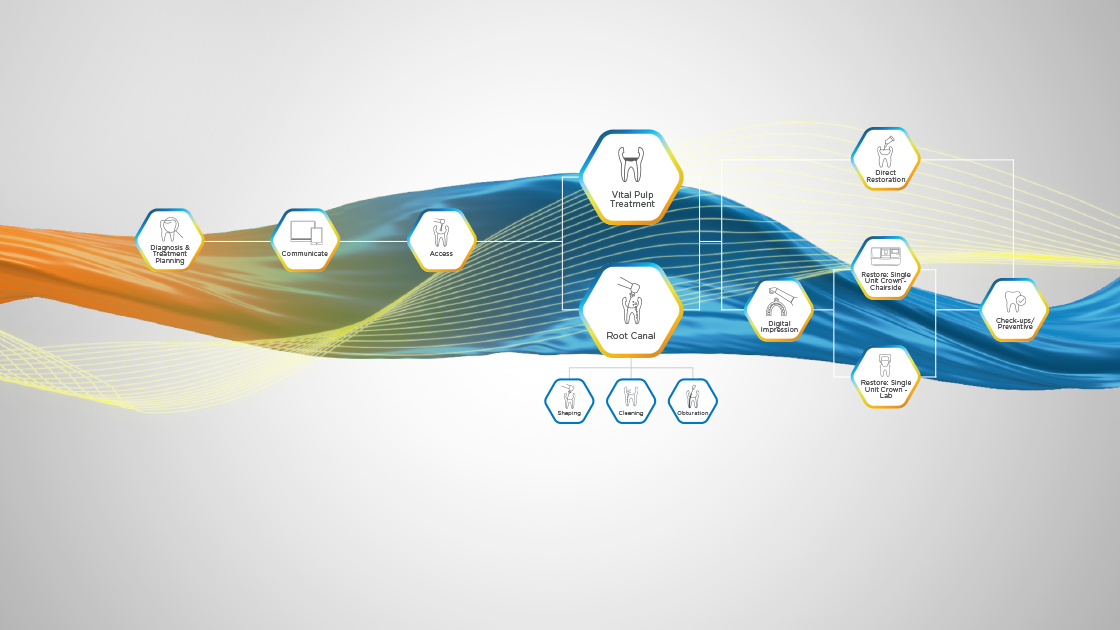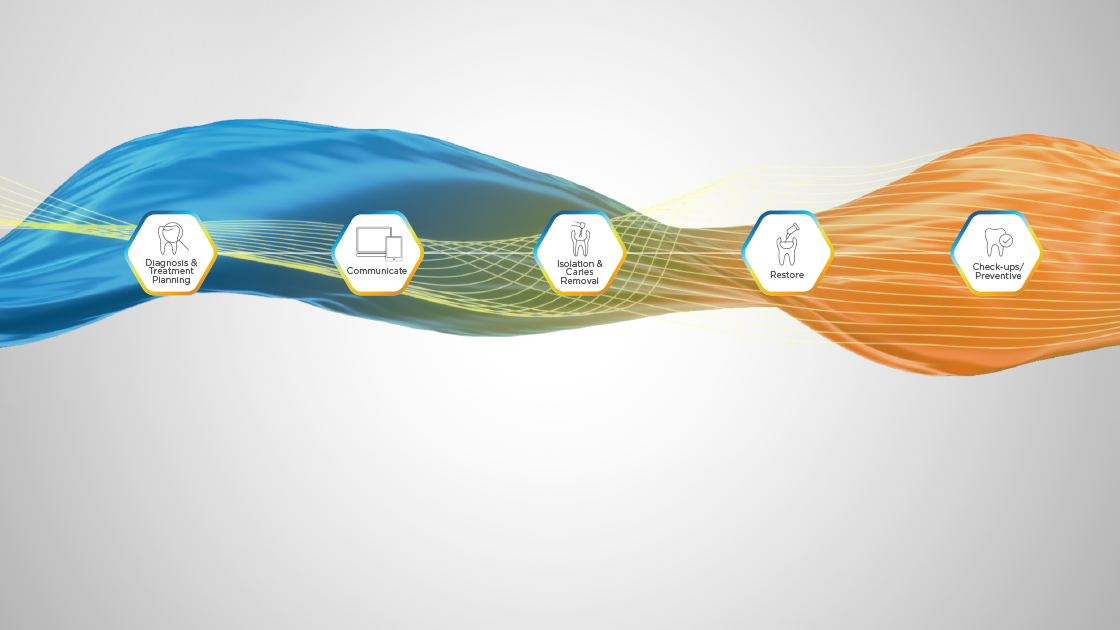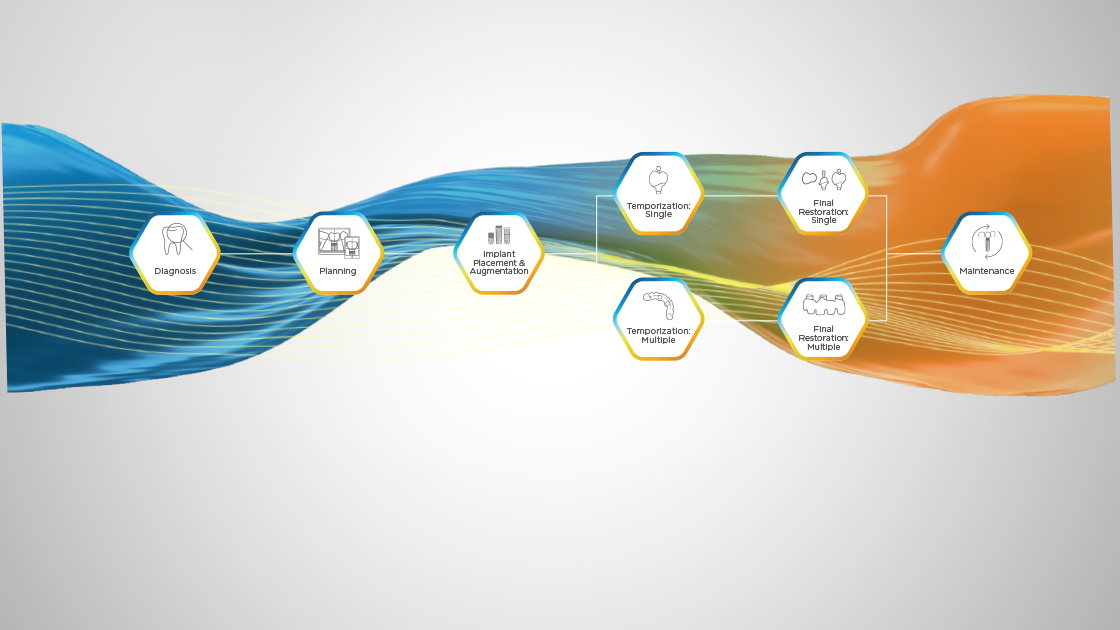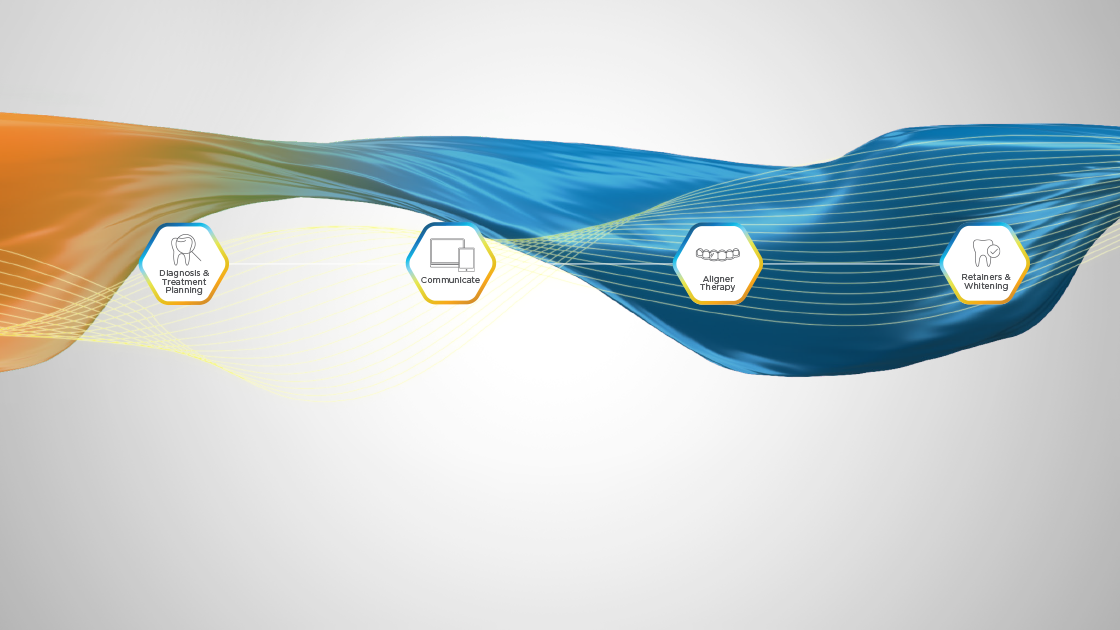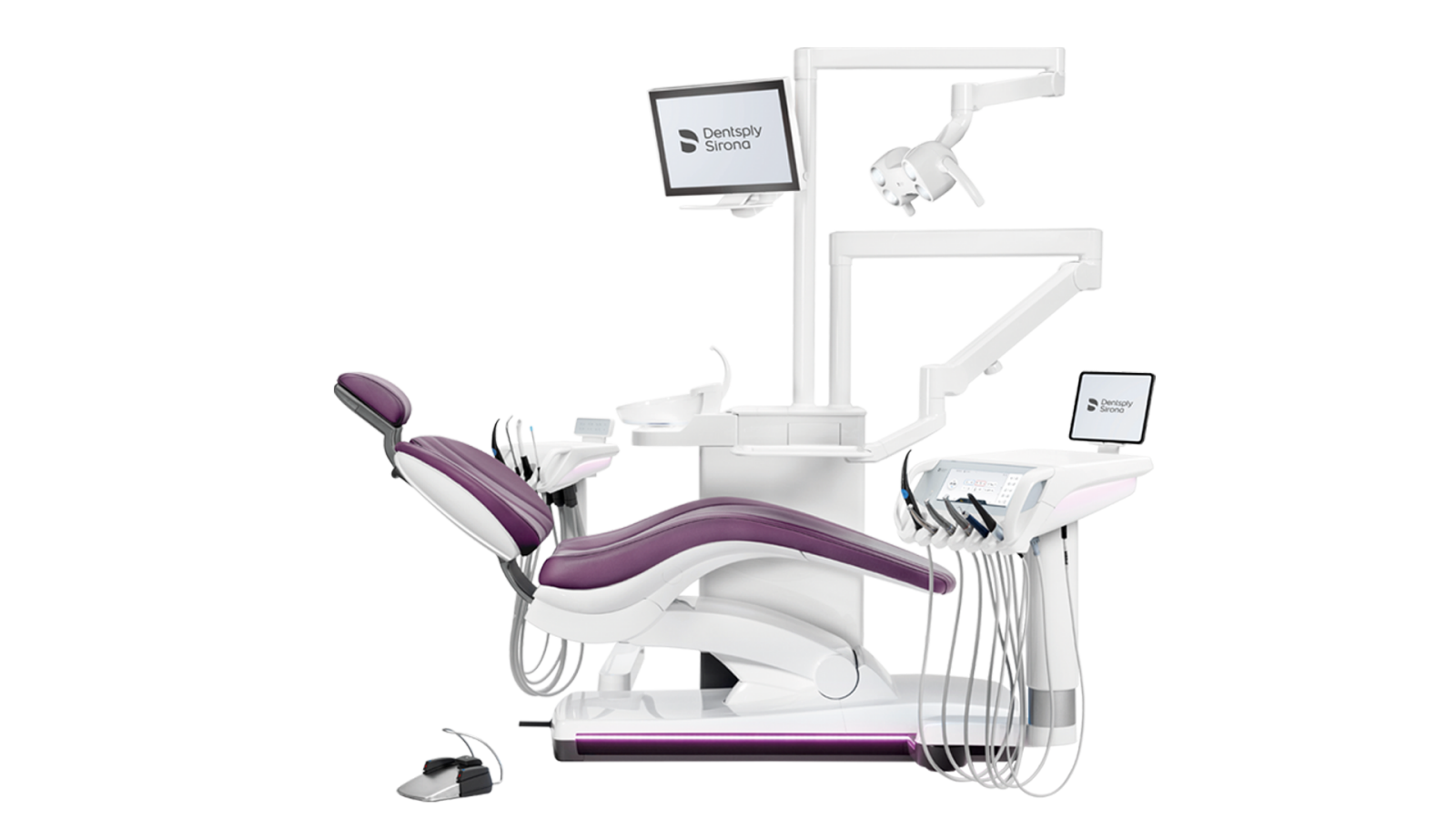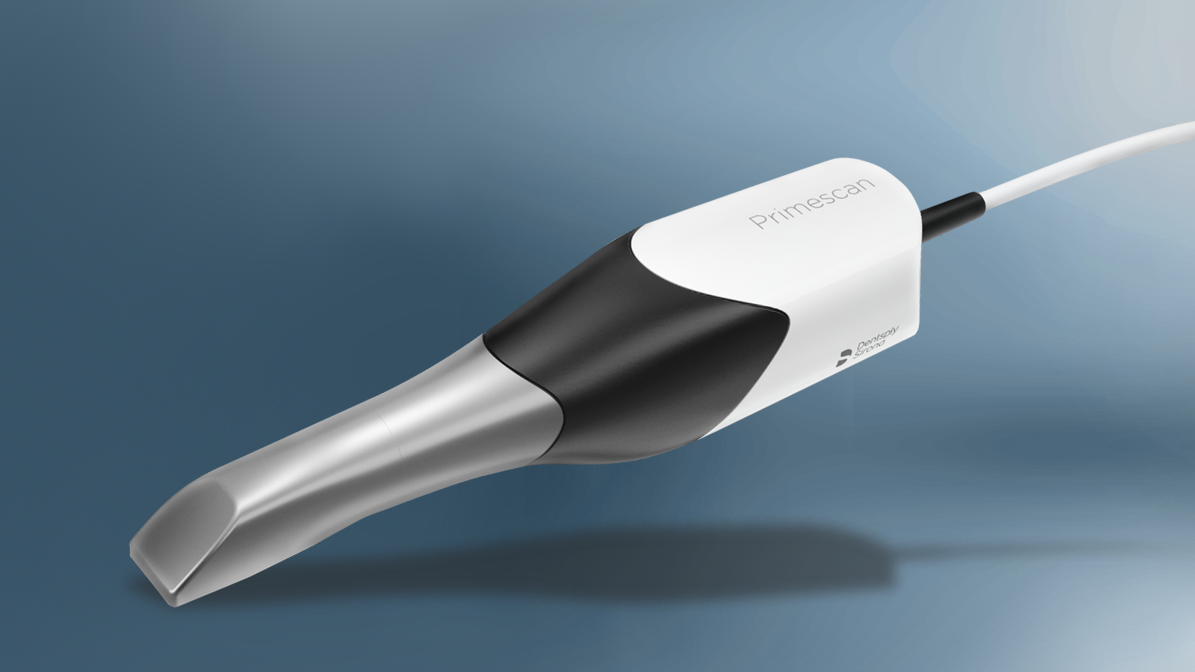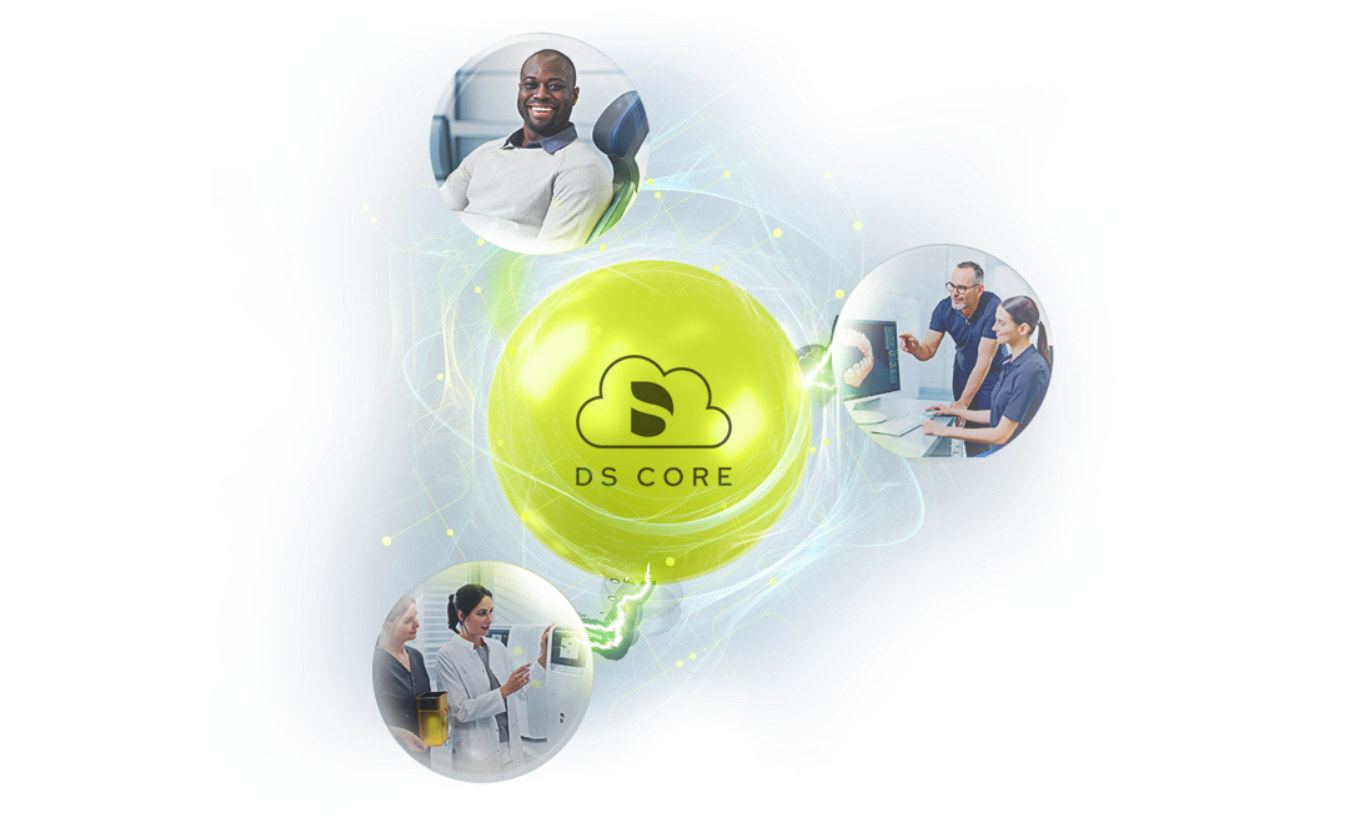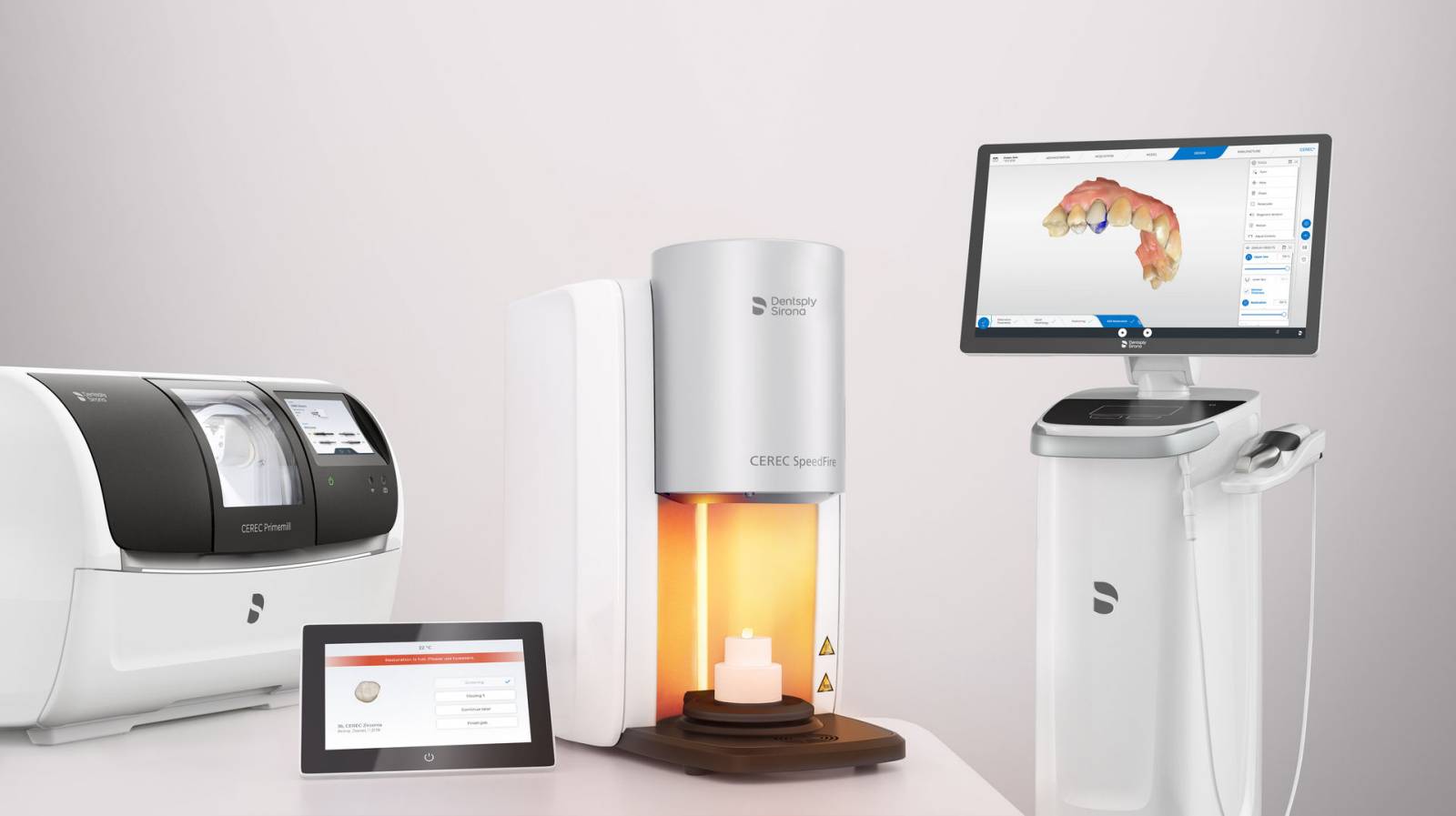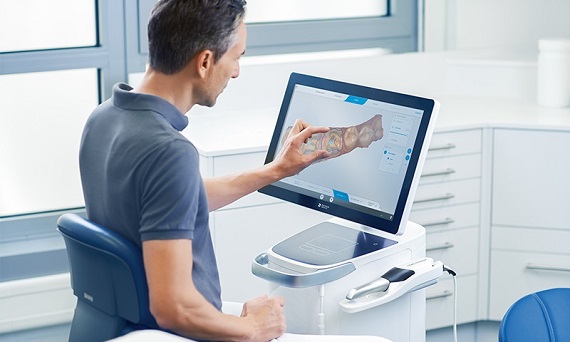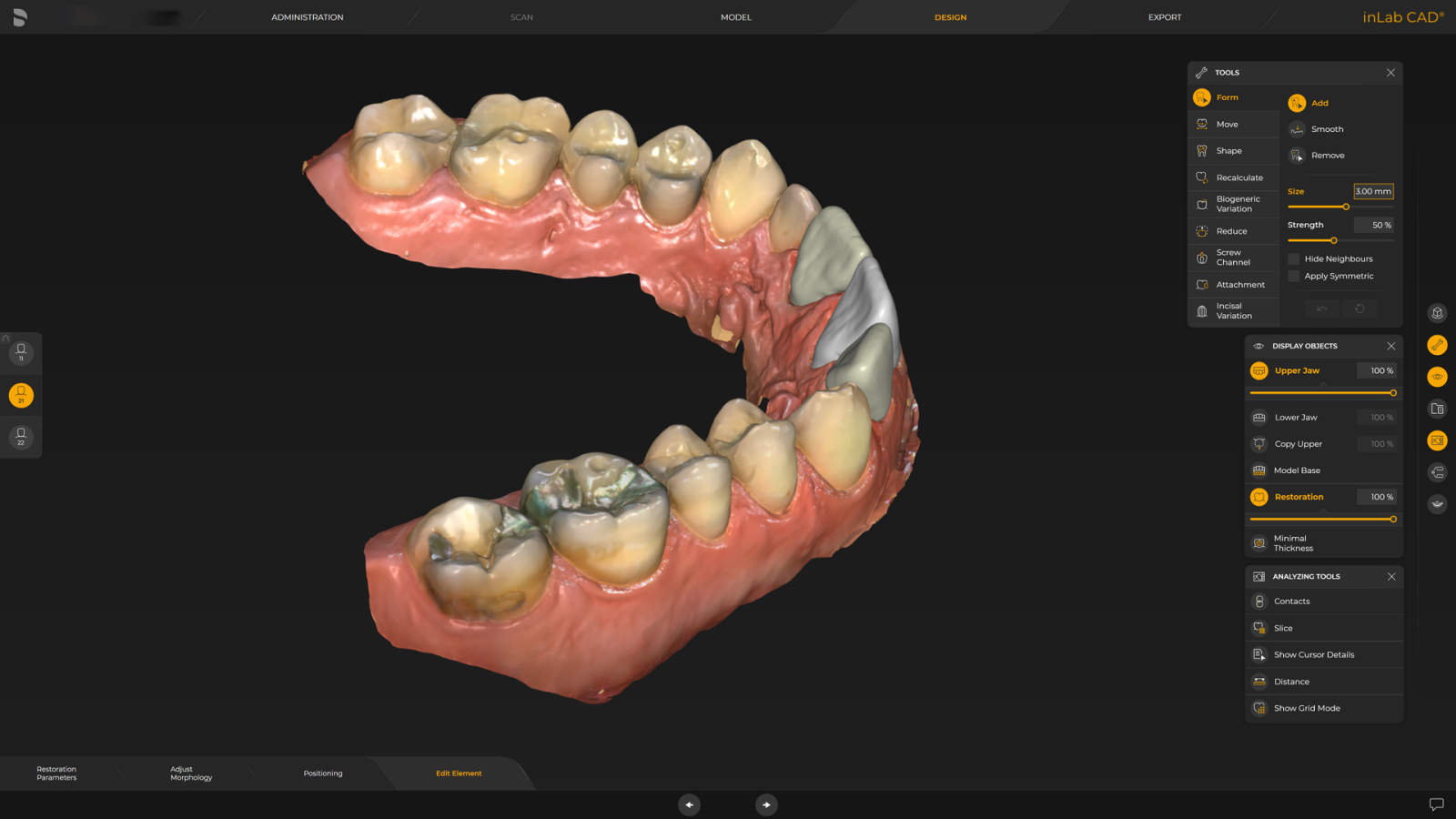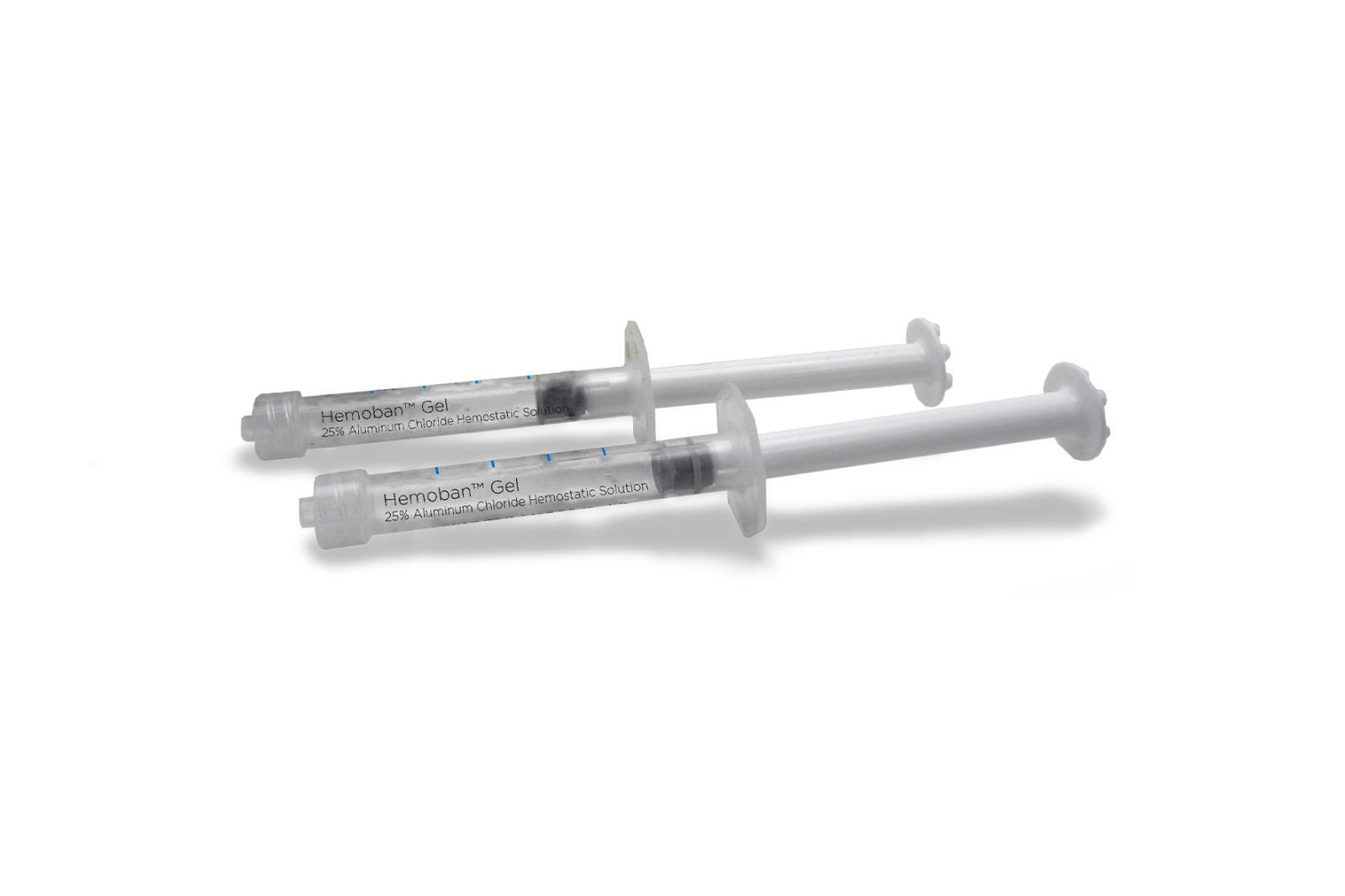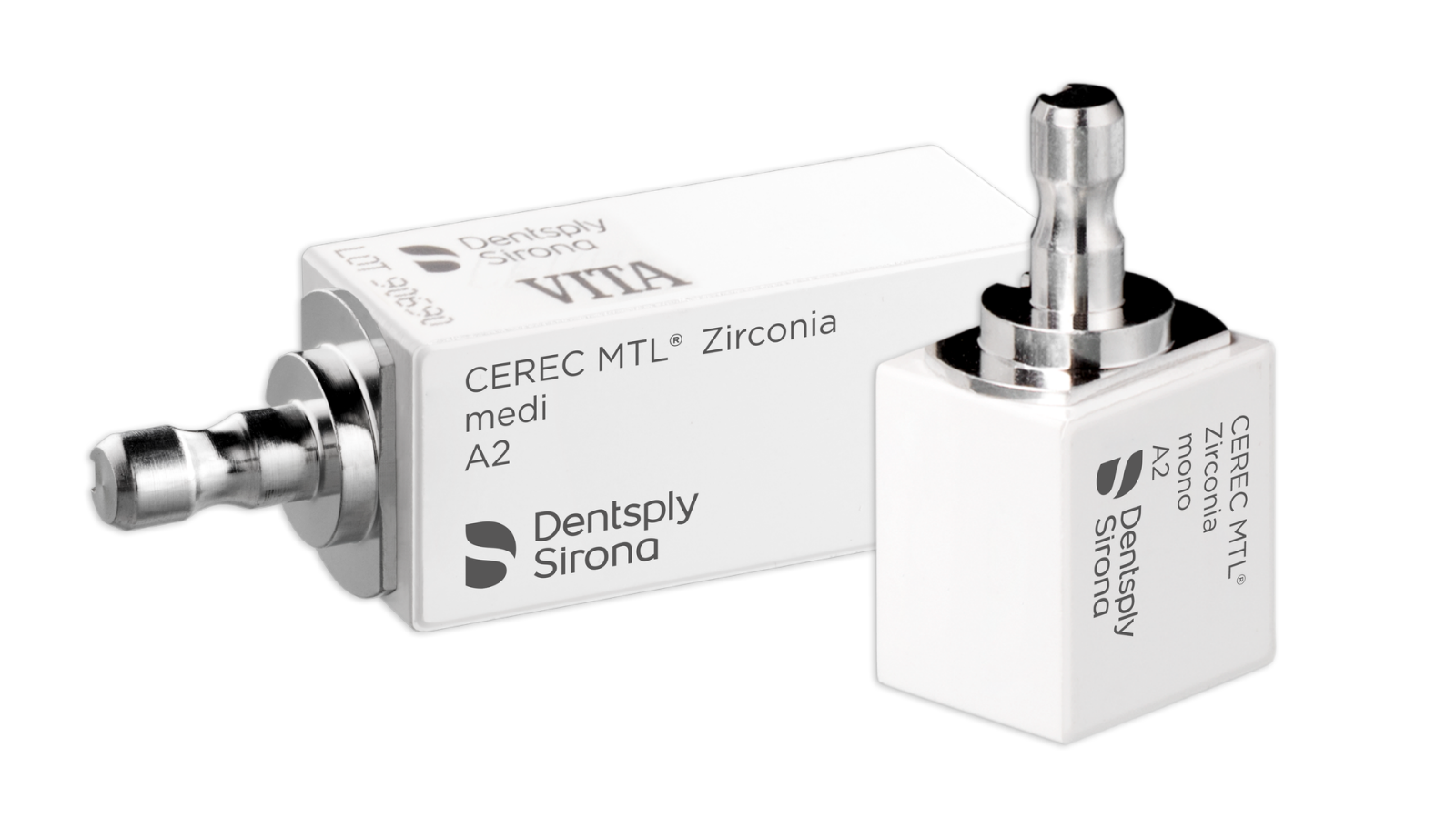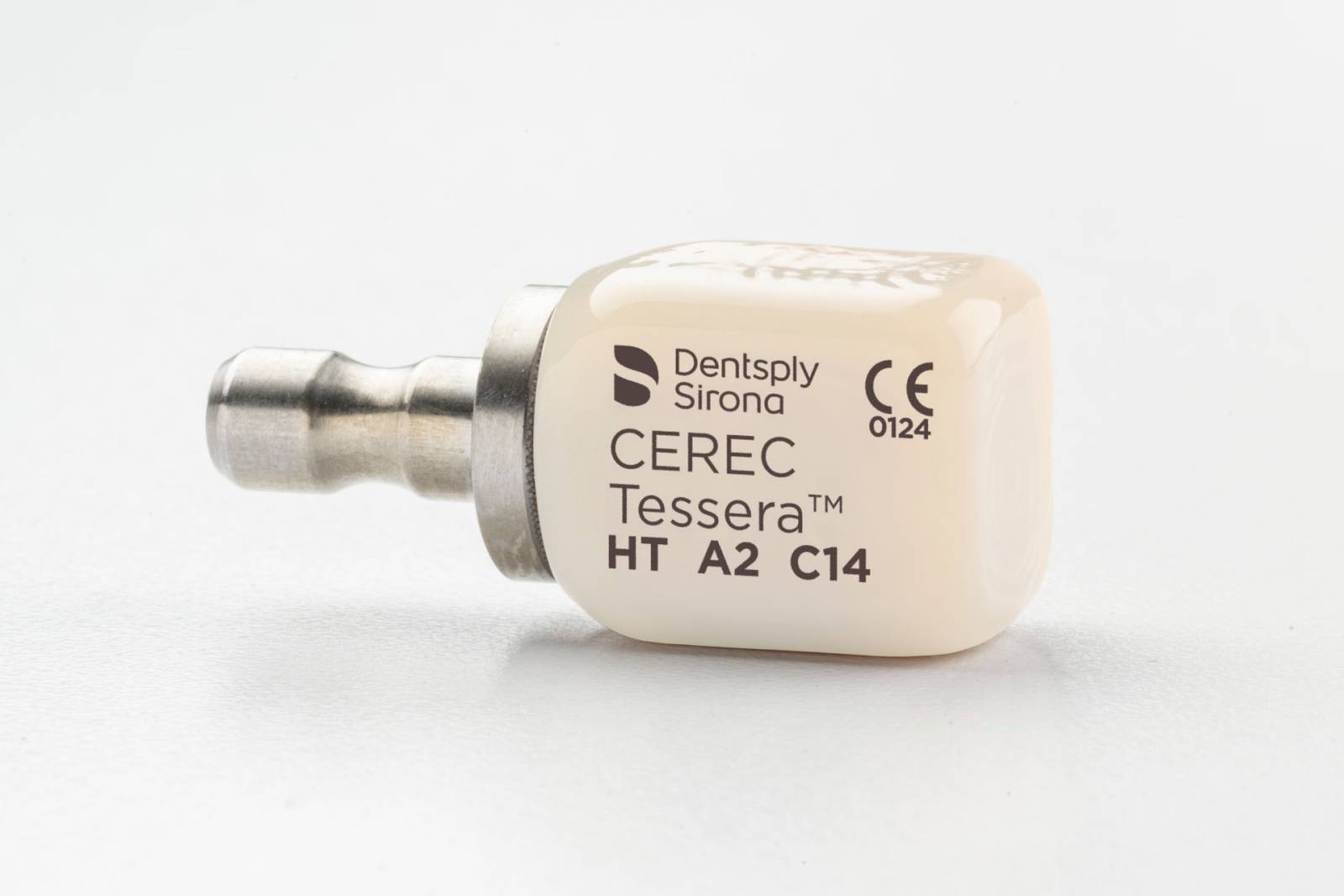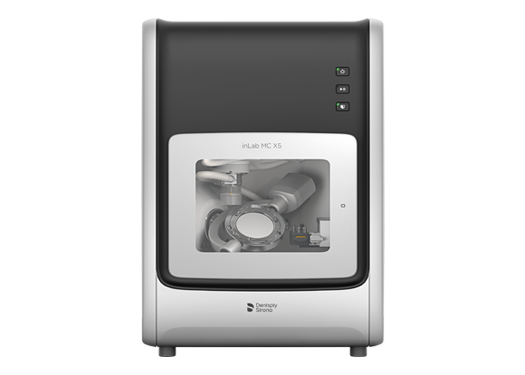© 2025 - Dentsply Sirona, All Rights Reserved
Restoring the look and function of a damaged or decaying tooth is the cornerstone of dentistry. High-quality single-unit crowns are one of the most common procedures in restorative dentistry and include numerous workflow steps to complete. In many cases, the need for a single unit crown follows endodontic treatment or is prescribed when large direct restorations and/or caries compromises remaining tooth structure. Executing this procedure with proficiency and skill is not only expected, but required.
Achieving a high-quality single-unit crown restoration relies on distinguished fabrication methods that result in an indistinguishable crown. When the micro parameters by creating broad, anatomic contacts, restoring ideal occlusion, avoiding pathologic interferences and promoting gingival health are met, optimally functional indirect restoration results are achieved. More and more, patients are demanding life-like esthetics for all crowns, regardless of tooth position in the arch. Digital Workflow benefits, like seamless information sharing and digital impressions, further streamline the process and ensure precision.
Indirect restoration quality and longevity can be achieved by utilizing a clear set of products with optimized techniques.
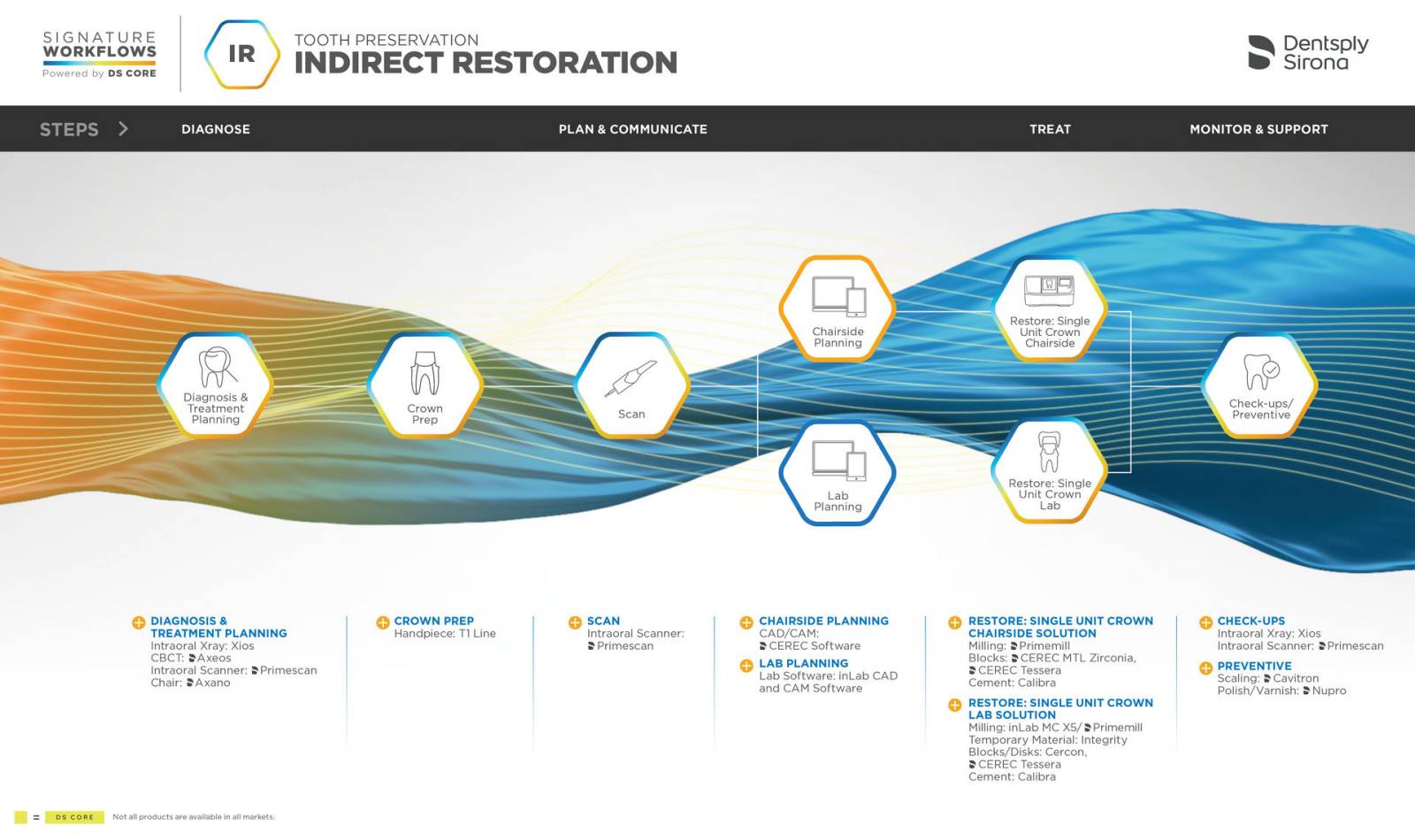
Step 1: Diagnosis
Indirect restorations are typically required to protect endodontically treated teeth or teeth that have damage to more than half of the width of the tooth. If there is a question as to whether the remaining tooth structure can withstand the normal occlusal force of function on its own, the best recourse is often a single unit crown.
In the diagnostic phase, the first step is to gather all relevant information through a thorough patient examination, history, and symptom review, with intraoral periapical radiographic imaging using the Xios® intraoral sensor and holders. Using the size two sensor for most adult single-tooth images, you can capture superior images with all relevant details and unparalleled quality for instant chairside diagnoses and presentation modules. Some features include.
● Multiple cable lengths
● Connection options for individualized patient adaptation
● Accelerated information readout
● Optimized data transfer
Permission to treat and meeting expectations are essential prior to initiating any treatment. Patients are more case-accepting when they feel informed and educated about a diagnosis and comfortable within the treatment environment. Xios® image processing on the smart touch display of the Axano® dental chair provides an exceptional treatment center experience through advanced patient communication and customizable smart display digital presentations.
The single-unit crown can account for up to half of the restorative revenue in a typical dental office, so implementing single-unit crown workflow solutions into practice optimizes the most critical steps allowing clinicians to work more efficiently while delivering high-quality, long-lasting restorations. From obtaining pre-op Primescan® digital impressions, final impressions and bite registration, CEREC® restoration fabrication to high-performance final cementation and maintenance, Dentsply Sirona's complete workflow for single unit crown restorations improves practice performance.
Step 2: Plan & Communicate
Once diagnosed, the digital dental workflow unfolds through communication and the determination of a treatment plan. DS Core® supports treatment workflows for single-unit chairside crown restorations and single-unit lab-based restorations. CEREC® software interconnects through DS Core’s cloud-based case connection center to expand practice workflows. This creates fast and easy designs for chairside restorations or collaborations with specialists, partners, labs, and 3rd party supporters for lab-based restorations, including inLab® software utilization to create custom lab processes that automatically consider material properties and integrate Cercon zirconium oxide into the material database.
If the indirect restoration requires gold or porcelain fused to metal crowns, then it will require a lab-based restoration, since milling is not an option for these materials. The timeline for treatment will be based on material selection; a milled, chairside restoration with CEREC® will reduce the entire workflow from multiple visits to a single in-office visit.
DS Core® features
- Cloud-based storage and collaboration center
- Up to 15 TB of storage capacity
- Cybercure technology
- Full patient media library
- Remotely accessible
- Toggle between in-house fabricated restorations and multi-doctor case configurations
- Supports CEREC® Software
- Utilizes BioJaw with AI for virtual articulation
Step 3: Treat
Crown preparation for a single-unit restoration begins with a preliminary intraoral impression for the fabrication of the provisional crown. In the case of a CEREC® chairside restoration being produced, the provisional step and preliminary impression are eliminated. However, clinicians find that having a preliminary impression is supportive for documentation and in the instance of case interruptions during preparation, ultimately affecting the treatment outcome. The decision to fabricate a lab-based unit over a chairside-based unit rests on the individual office and its workflow desires that often include considerations around cost, patient experience, and the desire for technology-driven practice integration.
Crown Prep
A strong restoration depends on a clearly defined preparation with adequate reduction, resistance and retention form, and that includes tissue management around the margin. The high‐quality straight and contra‐angle handpiece series T1 Line excels due to its ergonomic design. It sits feather‐light in your hand thanks to the titanium sleeves. This guarantees fatigue‐free working and precise results.
Once the tooth is prepared, and the tissue is managed with hemostatic or mechanical measures, it's time to take the final impressions. Tissue management is a key challenge during the entire indirect procedure, and at this stage, a reliable dental hemostatic agent can make all the difference. Hemoban® Gel 25% Solution is an aluminum chloride formula which stops bleeding on the spot, with no clotting and less risk of secondary bleeding, so you can take seamless digital impressions. It is viscous, spreadable, stays where you place it, and then rinses away easily leaving no residue—for better impression accuracy.
Throughout this stage, Primescan® can ensure the margins are clearly captured with no artifacts integrated into the prep area, then move the scanner circumferentially around the tooth to thoroughly scan it. Next, scan the entire working quadrant, the entire occluding quadrant, and capture a buccal scan of the teeth in occlusion.
Single Unit Crown Chairside Restorations
There used to be the assumption that if you had a CEREC®, you were subject to use inferior, third-party materials compared to lab-fabricated restorations, but that is no longer the case. CEREC® Primemill is compatible with 50 different materials from a choice of validated partners, including CEREC MTL® Zirconia and CEREC® Tessera™. The crown preparation and digital impression are the same as for a single unit lab-based digital workflow and are integrated through DS Core® and CEREC® software. CEREC® Primemill delivers outstanding production of restoration margins and surface details with extra fine milling steps for a higher level of detail, offering patients precise and esthetic results while empowering dentists to provide capable chairside dentistry in less time than ever before. Single-visit high-quality restorations eliminate annoying temporary restorations and open the door to providing quality care to your patients.
Single Unit Crown Lab-based Restorations
Once the digital impression with Primescan® is complete, you are ready to fabricate the temporary crown by using the pre-op impression matrix and Integrity® Multi-Cure temporary crown and bridge material. An Integrity® Multi-Cure provisional crown can either self-cure or be light cured directly in the matrix for accelerated cure. Once cured, the temporary margins are refined, occlusion is adjusted, and then polished. Be sure to check proximal contacts, marginal fit, and the emergence profile to ensure seal, function, and esthetics. Once complete, the provisional crown is cemented.
Within 15 minutes of receiving the scan reports within the DS Core® hub, a dental lab can start production of the restoration. The inLab® MC X5 is a universal 5-axis production milling unit for wet and dry lab fabrications. The inLab® MC X5 can produce restorations in zirconia, polymers, composites, wax, and sintering metal, as well as glass and hybrid ceramics. The case range for inLab® MC X5 enables dental technicians to make productive use of their equipment and materials. Cercon® is a lab-based CAD/CAM option showcasing as a hybrid high-performance zirconium oxide material with multilayers in ht ML and xt ML.
Final Cementation
The final cement process happens once proper fit, contour, shade and occlusion are confirmed on the final restorative crown. To achieve an effortless delivery with measures that ensure marginal integrity, the final cement selected should allow easy and complete seating, enhance esthetics for translucent restorations, reduce any risk of microleakage or secondary caries and ensure the complete removal of all excess cement. Even just a small amount of excess cement on the gingival margin can cause lead to oral health problems that require follow-up interventions in the future.
Calibra® final cement includes options for all restorative materials, including Calibra® Bio, a Bioceramic, conventional luting cement, Calibra® Ceram, an adhesive resin-cement, and Calibra® Universal, a self-adhesive resin cement.
Calibra® Bio Bioceramic Luting Cement
Powder-liquid capsules - Recommended for use with Zirconia Restorations
- Follow pre-treatment directions from the dental lab or manufacturer for pre-treatment of the restoration
- Clean, rinse and dry the tooth
- Activate and titrate Calibra® Bio capsule for eight seconds
- Secure capsule in the extruder
- Apply in a thin and uniform layer into the final crown
- Seat crown with stabilizing finger pressure and avoid any movements
- Excess cement is ready for clean-up after two minutes or after reached rubber-like consistency
- After 6-8 minutes (from start of mix), the restoration is fully cured and ready for a final check
Calibra® Ceram Adhesive Resin Cement
Dual-barrel automix syringe- All ceramic (light-transmissible) crowns
- Follow pre-treatment directions from the dental lab or manufacturer for pre-treatment of the restoration
- Apply adhesive to clean tooth prep
- Air dry and light-cure for 10 seconds
- Apply a thin, uniform layer of Calibra® Ceram to the intaglio surface of the restoration
- Seat restoration and stabilize
- Excess cement can be light-cured for up to five seconds per surface or by self-cured mode after 1-2 minutes in the mouth
Note: The “gelled” state of the cement lasts for approximately 45 seconds following the light exposure - Remove all excess cement
- Light cure all areas of the restoration (buccal, lingual, and occlusal) for 20 seconds each
- The restoration is fully cured and ready for a final check
Calibra® Universal Self-Adhesive Resin Cement
Dual-barrel automix syringe - Any indication
- Follow pre-treatment directions from the dental lab or manufacturer for pre-treatment of the restoration
- Apply a thin, uniform layer of Calibra® Universal to the intaglio surface of the restoration
- Seat restoration and stabilize
- Excess cement can be light-cured for up to five seconds per surface or by self-cured mode after 1-2 minutes in the mouth. Note: The “gelled” state of the cement lasts for approximately 45 seconds following the light exposure
- For non-light transmissible restoration, light cure margins for 20-40 seconds in dual cure mode. Allow cement to self-cure without disturbing for 6 minutes from start of mix.
- For light transmissible restorations, light cure all areas for 10 seconds from each direction: buccal, lingual, and occlusal.
- The restoration is fully cured and ready for a final check
Step 4: Monitor and Support
Once treatment is finalized, patients should be seen bi-annually for checkups and hygiene visits and more frequently if homecare hygiene indicates this. Through regular bitewing and periapical radiographic imaging with Xios® sensors, any marginal changes or interproximal concerns can be addressed early.
Dental hygienists should be cautious in using Cavitron® units on crowns. If used incorrectly, ultrasonic scalers can damage the crowns, as well as veneers, or bonding. When used correctly, however, the margins can be cleaned and lavaged without damage occurring. After manual scaling and prophylaxis, crowns can be polished with a Nupro® prophy paste for final results. If any exposed root surfaces are becoming sensitive, applying a varnish post-operatively is the most appealing final step.
There is also an opportunity to use Primescan® digital impressions to capture tooth and restoration surfaces at future check-ups and compare it to the pre-operative impressions. The 3D digital impressions are useful for monitoring the restoration as well as tooth movement over time.
Primescan® is an effective way to digitize your practice, along with its integrated solutions like DS Core®. The gateway to the digital dental universe is built on solutions that empower clinicians to grow their practice by interconnecting workflows and helping to streamline treatment. Dentsply Sirona has developed essential product-facing workflows that integrate online cloud-storage platforms that are revolutionizing how solution-based systems interconnect and function.
DS Core® serves as the cloud brain for an online ecosystem that enables clinicians to store, share, and present patient data seamlessly across different platforms anywhere in the world, all while connecting their vast array of workflow-based equipment and materials. Power your digital universe by integrating solutions while streamlining efficiency.
All Dentsply Sirona equipment is compliant with all privacy and security laws across the globe. For more information on solutions and workflows to support your practice, contact us today.



